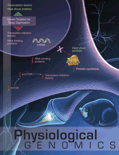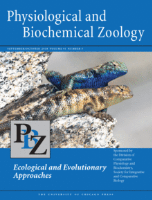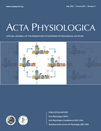
JOURNAL OF PHYSIOLOGY-LONDON
Scope & Guideline
Connecting History with Future Discoveries in Physiology
Introduction
Aims and Scopes
- Physiological Mechanisms:
Research exploring the mechanisms underlying physiological processes in various systems, including cardiovascular, respiratory, and neuromuscular physiology. - Cellular and Molecular Physiology:
Studies that investigate cellular signaling pathways, ion channel function, and molecular interactions affecting physiological functions. - Integrative Physiology:
Research focusing on the integration of physiological systems and their responses to external and internal stimuli, including exercise, hypoxia, and pharmacological interventions. - Translational Physiology:
Investigations aimed at translating basic physiological research into clinical applications, particularly in the context of disease mechanisms and therapeutic strategies. - Comparative Physiology:
Studies comparing physiological processes across species to understand evolutionary adaptations and functional diversity.
Trending and Emerging
- Neurophysiology and Neuroplasticity:
An increasing focus on how neural circuits adapt and reorganize in response to various stimuli, including learning, injury, and rehabilitation. - Microphysiology and Organoids:
Research utilizing microphysiological systems and organoid models to study human physiology and disease mechanisms in a controlled environment. - Metabolic Health and Disease:
A growing interest in the physiological mechanisms underlying metabolic disorders, with a focus on exercise, nutrition, and pharmacological interventions. - Environmental Physiology:
Research addressing the physiological adaptations to environmental stressors such as high altitude, hypoxia, and climate change, reflecting the growing awareness of global health challenges. - Personalized Medicine Approaches:
The emergence of studies aimed at understanding individual variability in physiological responses to interventions, promoting tailored therapeutic strategies.
Declining or Waning
- Traditional Exercise Physiology:
Research specifically focused on traditional metrics of exercise physiology, such as VO2 max, is becoming less central as newer methodologies and interdisciplinary approaches gain traction. - Basic Reflex Studies:
Studies exclusively examining basic reflex pathways without integrating more complex behavioral and environmental contexts are appearing less frequently. - Invasive Physiological Techniques:
The use of invasive techniques in human studies is declining, with a shift towards non-invasive and less intrusive methodologies that respect patient safety and comfort. - Static Models of Physiological Systems:
Static models that do not account for dynamic physiological changes and interactions are being replaced by more comprehensive, dynamic modeling approaches.
Similar Journals

AMERICAN JOURNAL OF PHYSIOLOGY-CELL PHYSIOLOGY
Exploring the Intricacies of Cell Life.Welcome to the American Journal of Physiology-Cell Physiology, a premier publication produced by the American Physiological Society that has been a cornerstone of research in cell biology and physiology since its inception in 1977. With its esteemed reputation solidified by its Q1 ranking in both Cell Biology and Physiology categories as of 2023, this journal serves as a vital resource for researchers, professionals, and students pursuing cutting-edge discoveries in cellular mechanisms. The journal is published in the United States and is recognized for its rigorous peer-review process, contributing to its high impact factor and prestigious standing—ranking #32 out of 193 in Physiology and #75 out of 285 in Cell Biology according to Scopus. While the journal does not provide open access, it remains an essential repository of knowledge, fostering innovation and advancing the field with original research articles, reviews, and commentaries. Join us in exploring the molecular intricacies of life through the compelling research that the American Journal of Physiology-Cell Physiology has to offer.

PFLUGERS ARCHIV-EUROPEAN JOURNAL OF PHYSIOLOGY
Bridging Theory and Practice in Physiological SciencePflügers Archiv - European Journal of Physiology, published by Springer Heidelberg, stands at the forefront of physiological research, showcasing groundbreaking studies since its inception in the 1950s. With a distinguished ISSN of 0031-6768 and an E-ISSN of 1432-2013, this esteemed journal maintains a robust reputation, holding Q1 rankings in Clinical Biochemistry, Physiology, and Medical Physiology as of 2023. Its impressive Scopus rankings place it in the top percentile across various categories, including Biochemistry, Genetics and Molecular Biology and Medicine. Pflügers Archiv serves as a vital platform for researchers, professionals, and students, facilitating the dissemination and discussion of advanced physiological concepts and methodologies. Although it does not currently offer open access, its rigorous peer-review process ensures the highest quality publications that contribute significantly to our understanding of physiological science. Explore the depth of physiological research that shapes our academic landscape today.

JOURNAL OF GENERAL PHYSIOLOGY
Fostering Collaboration in the Study of Life SystemsJOURNAL OF GENERAL PHYSIOLOGY, published by Rockefeller University Press, is a leading peer-reviewed journal that has been at the forefront of physiological research since its inception in 1918. With an ISSN of 0022-1295 and an E-ISSN of 1540-7748, this esteemed journal maintains an impressive Q1 ranking in the field of Physiology, reflecting its high-quality contributions to both the basic and applied aspects of physiology. Regularly cited in the scientific community, it ranks 70th out of 193 in the category of Biochemistry, Genetics, and Molecular Biology, showcasing its significant impact within academic circles. The journal publishes original research, reviews, and commentaries, aiming to advance the understanding of physiological mechanisms and their implications across various biological systems. Although not Open Access, the journal remains a vital resource for researchers, professionals, and students dedicated to exploring the depths of cardiopulmonary function, neurophysiology, and cellular biochemical processes. The JOURNAL OF GENERAL PHYSIOLOGY continues to serve as a critical platform for disseminating innovative findings and fostering collaboration among scientists globally.

CANADIAN JOURNAL OF PHYSIOLOGY AND PHARMACOLOGY
Elevating Knowledge in Physiology and PharmacologyCanadian Journal of Physiology and Pharmacology, published by Canadian Science Publishing, is a leading peer-reviewed journal dedicated to advancing knowledge in the fields of physiology and pharmacology. With an ISSN of 0008-4212 and an E-ISSN of 1205-7541, this journal has been at the forefront of biomedical research since its inception in 1964. The journal operates within a constrained access model, ensuring a selective dissemination of high-quality research, while maintaining its esteemed position in the Q3 quartile across multiple relevant categories such as Medicine, Pharmacology, and Physiology as of 2023. Researchers, professionals, and students alike will find the journal a valuable resource for emerging trends and comprehensive studies that shape contemporary science, as evidenced by its competitive Scopus rankings. The Canadian Journal of Physiology and Pharmacology is vital for fostering scholarly dialogue and innovation in the scientific community, encouraging contributions that promote a deeper understanding of physiological and pharmacological phenomena.

Physiological Genomics
Decoding the Genetic Blueprint of Physiological ProcessesPhysiological Genomics is a prestigious scholarly journal published by the American Physiological Society, dedicated to advancing the understanding of the genetic underpinnings in physiology. With an ISSN of 1094-8341 and an E-ISSN of 1531-2267, this journal serves as a vital platform for researchers exploring the intersection of genetics and physiological processes. As of 2023, it enjoys a respectable impact factor, particularly standing strong in the Q2 quartile in both Genetics and Physiology categories, illustrating its importance within a competitive landscape. With an impressive rank of #69 out of 193 in Biochemistry, Genetics, and Molecular Biology - Physiology, and #128 out of 347 in Genetics, it reflects a robust commitment to quality research. Committed to fostering innovation, Physiological Genomics provides comprehensive access to groundbreaking studies from 1999 to 2024 and remains a quintessential resource for researchers, professionals, and students alike aiming to enhance their understanding of physiological genomics.

PHYSIOLOGICAL AND BIOCHEMICAL ZOOLOGY
Pioneering Insights into Animal Function and FormPhysiological and Biochemical Zoology is a distinguished peer-reviewed journal published by University of Chicago Press, focusing on the interrelated fields of animal physiology, biochemistry, and zoology. With a strong commitment to advancing scientific understanding, this journal serves as a vital resource for researchers, professionals, and students alike, providing a platform for the latest findings and advancements in the field. Ranking in the top quartile (Q1) in Animal Science and Zoology as of 2023, and showcasing a substantial convergence of historical data from 1999 to 2023, its impact in the academic community is underscored by its engagement with high-quality research. While it also appears in the third quartile for Biochemistry and Physiology, the journal successfully integrates these disciplines, reflecting the complexity of biological systems. Available for reading via various access options, this journal is essential for anyone seeking to deepen their knowledge or contribute to the field of Zoological sciences.

JOURNAL OF EVOLUTIONARY BIOCHEMISTRY AND PHYSIOLOGY
Decoding the Evolutionary Threads of Biochemical ProcessesJOURNAL OF EVOLUTIONARY BIOCHEMISTRY AND PHYSIOLOGY, published by PLEIADES PUBLISHING INC, is a pivotal periodical that delves into the intricate relationships between biochemical processes and evolutionary dynamics. With its ISSN 0022-0930 and E-ISSN 1608-3202, this journal serves as a comprehensive platform for researchers, professionals, and students dedicated to understanding the physiological adaptations and biochemical mechanisms influenced by evolutionary pressures. Although it is not an open access journal, it offers valuable insights across its historically significant coverage spanning from 1972 to 2017, making it an essential resource for those working in agricultural, biological, and molecular sciences. Despite its current Scopus rankings revealing limited visibility within its fields, the journal remains committed to fostering scholarly dialogue and advancing knowledge in the realm of evolutionary biochemistry, especially for those exploring the ecological, genetic, and integrative physiological aspects of life.

PHYSIOLOGICAL RESEARCH
Championing Free Access to Pioneering ResearchPHYSIOLOGICAL RESEARCH, published by the Academy of Sciences of the Czech Republic, Institute of Physiology, serves as a prominent platform for scholarly contributions in the field of physiology and related disciplines. With an impact factor that highlights its significance—ranking in the Q2 category in Medicine (miscellaneous) and the Q3 in Physiology as of 2023—this journal has established itself as a vital resource for researchers, professionals, and students. Since becoming Open Access in 1991, it has broadened its reach, ensuring that vital research is freely available to academic communities worldwide. Covering a diverse range of topics, PHYSIOLOGICAL RESEARCH attracts submissions that advance the understanding of physiological processes, making it an indispensable resource for those invested in the field. Based in Prague, Czech Republic, this journal offers an enriching medium for discourse and dissemination in physiology, contributing to the global scientific landscape.

Acta Physiologica
Connecting Researchers through Open Access KnowledgeActa Physiologica is a premier, peer-reviewed journal published by WILEY, dedicated to the dissemination of high-quality research across the field of physiology. With an impressive impact factor reflective of its Q1 category ranking in Physiology for 2023, this journal is a vital resource for researchers, professionals, and students alike, seeking to explore the complexities of biological systems. The journal is indexed with a commendable Scopus rank of #18 out of 193 in its category, placing it within the top 10% of its field, which underscores its influence and citation frequency within the academic community. Acta Physiologica publishes a variety of articles that address fundamental physiological concepts, innovative methodologies, and cross-disciplinary research. With its open access options, the journal ensures that cutting-edge knowledge is readily accessible, fostering an environment of collaboration and advancement in the study of physiology. Spanning from 2006 to 2024, the journal continues to be at the forefront of physiological research and education, encouraging the global sharing of knowledge through its comprehensive content.

AMERICAN JOURNAL OF PHYSIOLOGY-HEART AND CIRCULATORY PHYSIOLOGY
Advancing cardiovascular knowledge for a healthier tomorrow.AMERICAN JOURNAL OF PHYSIOLOGY-HEART AND CIRCULATORY PHYSIOLOGY, published by the American Physiological Society, is a premier journal dedicated to advancing the understanding of cardiovascular physiology. With an ISSN of 0363-6135 and an E-ISSN of 1522-1539, this esteemed journal has been a vital resource since its inception in 1977, and continues to publish cutting-edge research that shapes the fields of cardiology and physiology. Recognized as a Q1 journal in multiple categories, it ranks impressively within the top tier of its fields, including a notable 18th percentile rank in Physiology (medical). The journal’s impact factor and extensive reach in the academic community affirm its significance in promoting innovative studies and insights. While it does not offer open access options, the journal remains accessible through institutional subscriptions, making it an essential tool for researchers, professionals, and students alike, who are keen to stay abreast of the latest developments in heart and circulatory physiology. For further information, the journal is based in the United States at 6120 Executive Blvd, Suite 600, Rockville, MD 20852. As a cornerstone of cardiovascular research, it invites contributions that push the boundaries of knowledge and enhance clinical practice.